Abstract
The in vitro response to Con A of lymphocytes from iron-deficient and normal mice in media containing either 10% fetal calf serum, apotransferrin or 20% iron-saturated transferrin was similar for the iron-deficient and control groups. However, the degree of proliferation in serum-free medium containing apotransferrin was significantly lower in all groups, compared to the responses in media containing either 20% iron-saturated transferrin or 10% fetal calf serum. Proliferation of lymphocytes from normal, iron-deficient or iron-repleted mice was lower in media supplemented with serum from iron-deficient mice than when serum from normal or iron-repleted mice was used. Addition of sufficient iron to bring the iron level of the deficient serum to that of normal serum significantly improved its ability to promote proliferation, while in vivo repletion of iron-deficient mice resulted in a restoration of normal lymphocyte responses to Con A. The proportion of cells positive for Thy 1.2, Ly 1 and Ly 2 antigens did not differ significantly between any groups of mice. Protein synthesis by cells proliferating in serum-free medium containing apotransferrin or 20% iron-saturated transferrin was the same in all groups of mice. These results indicate that decreased lymphocyte proliferative responses in iron deficiency may be due to inadequate levels of circulating transferrin-bound iron, rather than to intrinsic defects in the cells themselves or changes in the proportions of different T-cell subsets, and that iron availability does not affect protein synthesis by proliferating lymphocytes.
Full text
PDF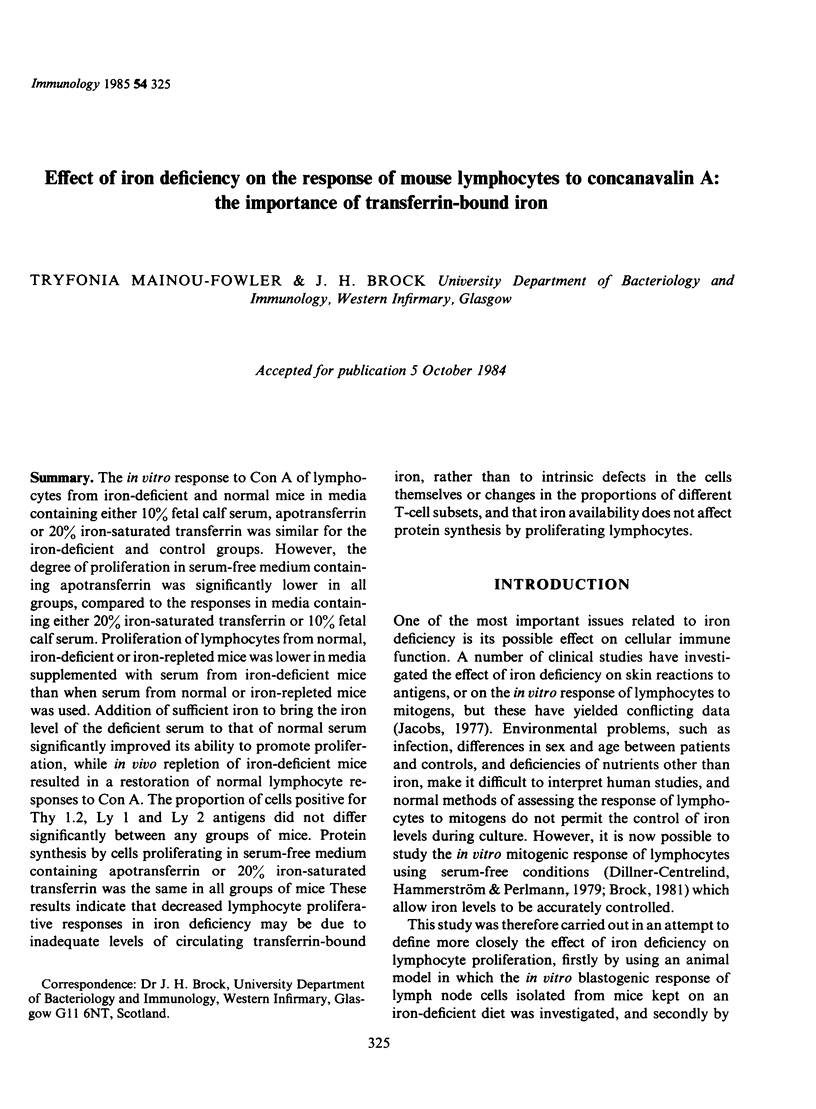
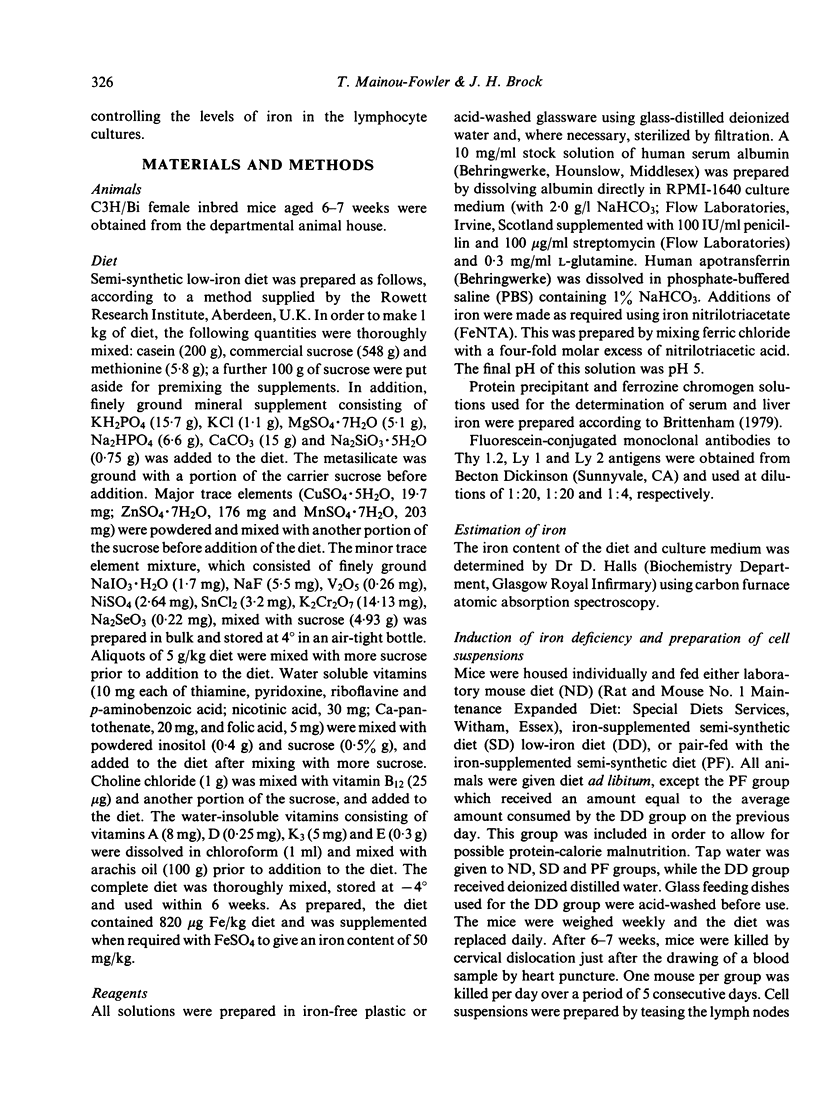
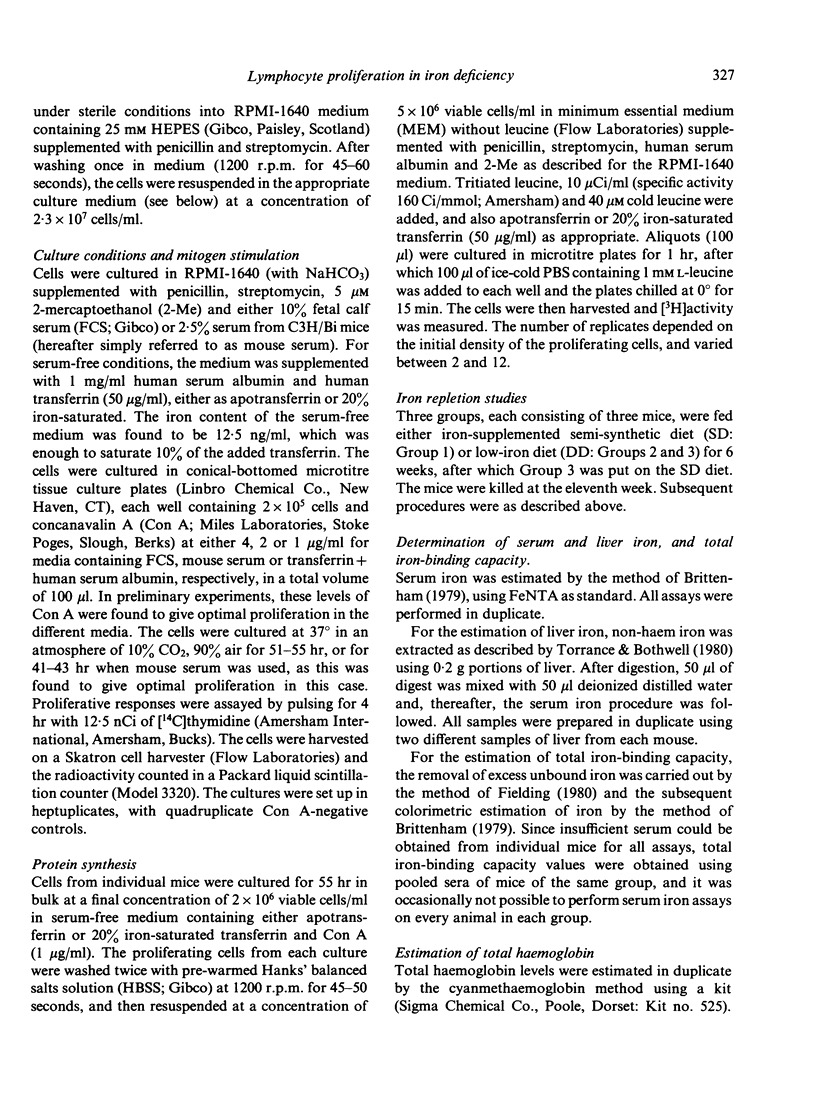
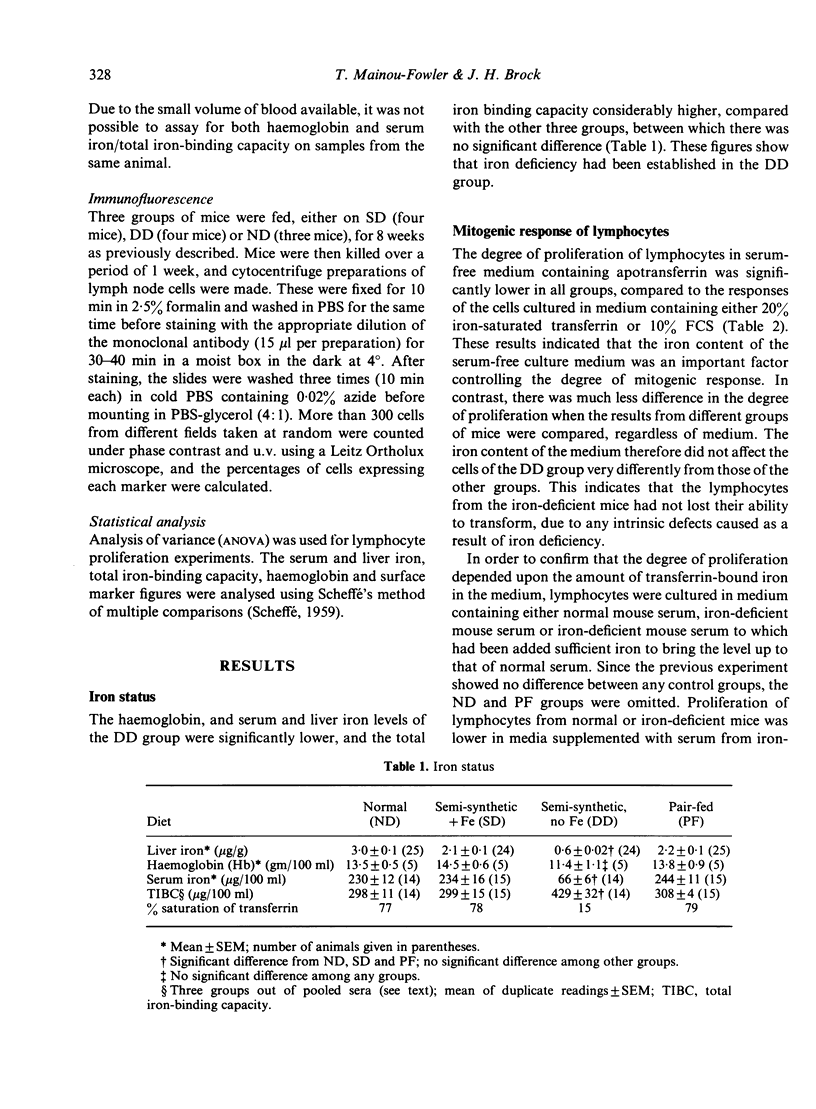

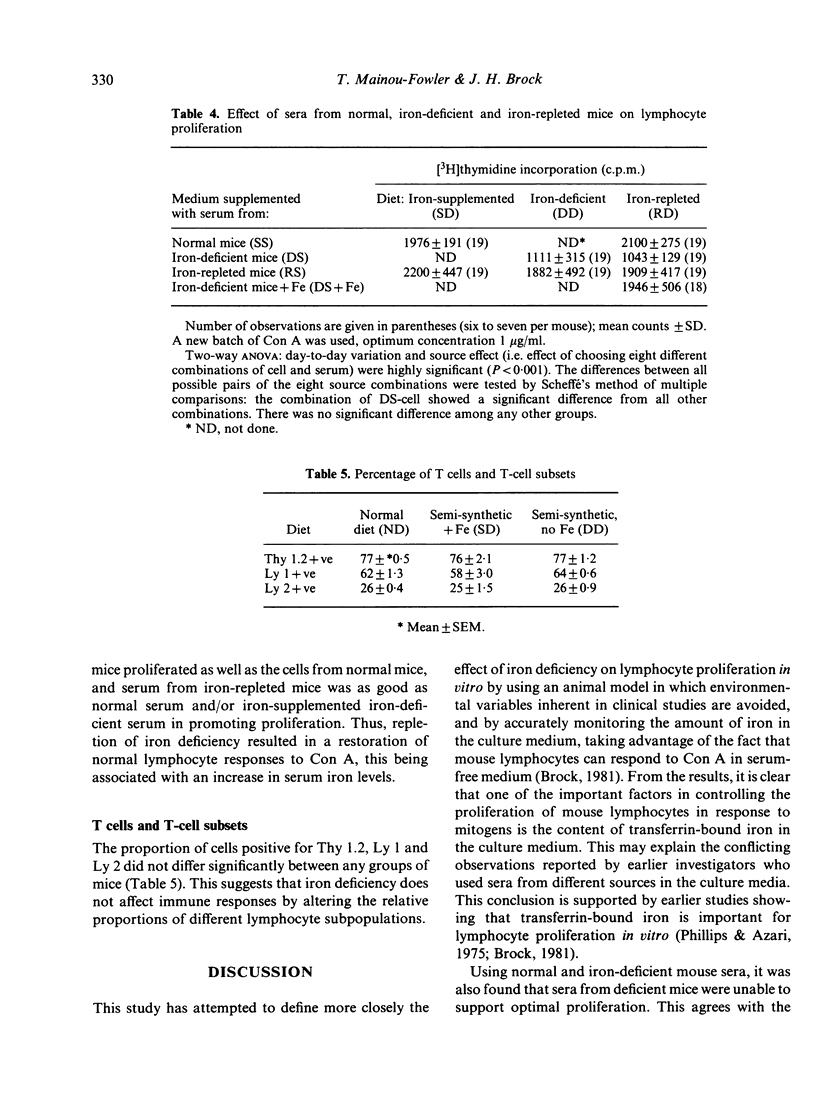
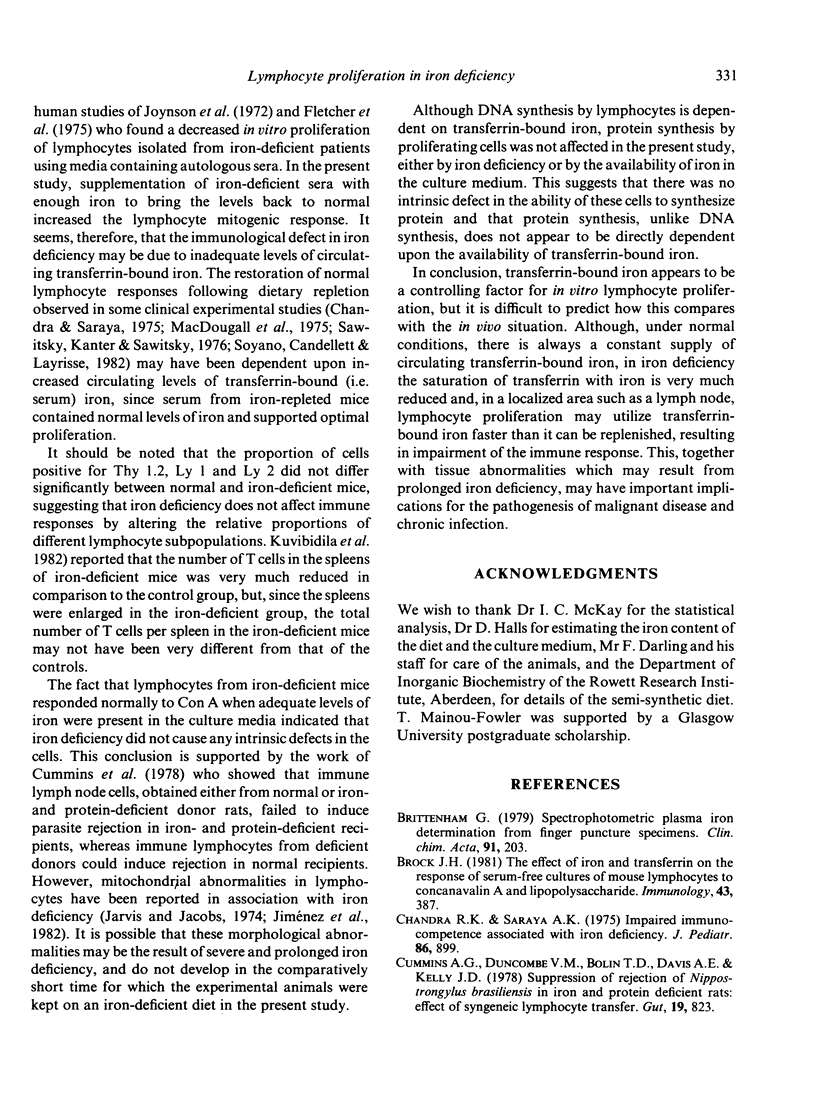
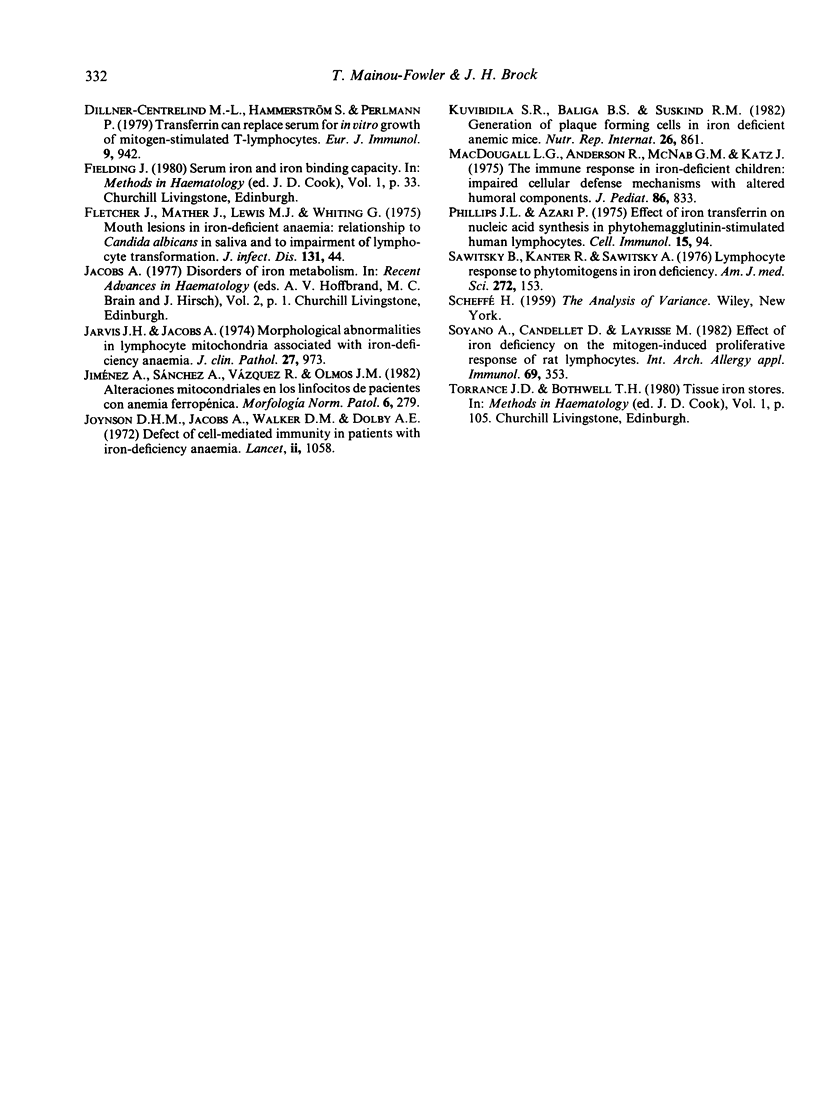
Selected References
These references are in PubMed. This may not be the complete list of references from this article.
- Brittenham G. Spectrophotometric plasma iron determination from fingerpuncture specimens. Clin Chim Acta. 1979 Jan 15;91(2):203–211. doi: 10.1016/0009-8981(79)90458-3. [DOI] [PubMed] [Google Scholar]
- Brock J. H. The effect of iron and transferrin on the response of serum-free cultures of mouse lymphocytes to concanavalin A and lipopolysaccharide. Immunology. 1981 Jun;43(2):387–392. [PMC free article] [PubMed] [Google Scholar]
- Chandra R. K., Saraya A. K. Impaired immunocompetence associated with iron deficiency. J Pediatr. 1975 Jun;86(6):899–902. doi: 10.1016/s0022-3476(75)80221-6. [DOI] [PubMed] [Google Scholar]
- Cummins A. G., Duncombe V. M., Bolin T. D., Davis A. E., Kelly J. D. Suppression of rejection of Nippostrongylus brasiliensis in iron and protein deficient rats: effect of syngeneic lymphocyte transfer. Gut. 1978 Sep;19(9):823–826. doi: 10.1136/gut.19.9.823. [DOI] [PMC free article] [PubMed] [Google Scholar]
- Dillner-Centerlind M. L., Hammarström S., Perlmann P. Transferrin can replace serum for in vitro growth of mitogen-stimulated T lymphocytes. Eur J Immunol. 1979 Dec;9(12):942–948. doi: 10.1002/eji.1830091207. [DOI] [PubMed] [Google Scholar]
- Fletcher J., Mather J., Lewis M. J., Whiting G. Mouth lesions in iron-deficient anemia: relationship to Candida albicans in saliva and to impairment of lymphocyte transformation. J Infect Dis. 1975 Jan;131(1):44–50. doi: 10.1093/infdis/131.1.44. [DOI] [PubMed] [Google Scholar]
- Jarvis J. H., Jacobs A. Morphological abnormalities in lymphocyte mitochondria associated with iron-deficiency anaemia. J Clin Pathol. 1974 Dec;27(12):973–979. doi: 10.1136/jcp.27.12.973. [DOI] [PMC free article] [PubMed] [Google Scholar]
- Joynson D. H., Walker D. M., Jacobs A., Dolby A. E. Defect of cell-mediated immunity in patients with iron-deficiency anaemia. Lancet. 1972 Nov 18;2(7786):1058–1059. doi: 10.1016/s0140-6736(72)92340-9. [DOI] [PubMed] [Google Scholar]
- Macdougall L. G., Anderson R., McNab G. M., Katz J. The immune response in iron-deficient children: Impaired cellular defense mechanisms with altered humoral components. J Pediatr. 1975 Jun;86(6):833–843. doi: 10.1016/s0022-3476(75)80211-3. [DOI] [PubMed] [Google Scholar]
- Phillips J. L., Azari P. Effect of iron transferrin on nucleic acid synthesis in phytohemagglutinin-stimulated human lymphocytes. Cell Immunol. 1975 Jan;15(1):94–99. doi: 10.1016/0008-8749(75)90167-7. [DOI] [PubMed] [Google Scholar]
- Sawitsky B., Kanter R., Sawitsky A. Lymphocyte response to phytomitogens in iron deficiency. Am J Med Sci. 1976 Sep-Oct;272(2):153–160. doi: 10.1097/00000441-197609000-00004. [DOI] [PubMed] [Google Scholar]
- Soyano A., Candellet D., Layrisse M. Effect of iron deficiency on the mitogen-induced proliferative response of rat lymphocytes. Int Arch Allergy Appl Immunol. 1982;69(4):353–357. doi: 10.1159/000233199. [DOI] [PubMed] [Google Scholar]


